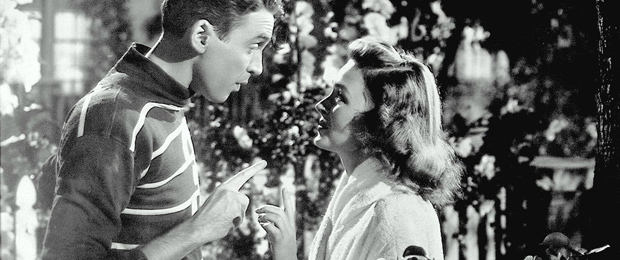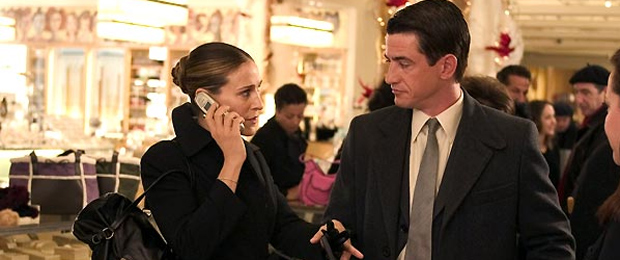Unmissable during this period of truce for confectioners, Christmas films, family works par excellence, are an authentic Proust madeleine for spectators, in theaters and on TV. But why are they so popular?
In France there are many films to which one could attribute the label “Christmas film”, like the choral comedy La Bûche by Danièle Thompson and his family meal turning sour; or, to take a more recent reference, the tasty and endearing Santa & Cie by Alain Chabat, who slips under the clothes of a Santa Claus in a galley to save the magic of Christmas.
But this tradition is best known for being the prerogative of the Anglo-Saxons, and in particular the Americans. In the United States, it is a real institution, an unbreakable annual and family ritual. And the country obviously did not wait for the Love Actually, Last Christmas, and other antics of Tim Allen, a great specialist in front of the eternal Super Christmas saga, which is booming at a frenetic pace, to look with relish on the truce of confectioners.
This tradition has had its cinematographic totems for decades: we still celebrate with so much verve the multi-broadcast Miracle on 34th Street, a great classic released in 1947 for the Christmas holidays, which won three Oscars. A work pampered to the point of appearing since 2005 in the National Film Registry, to be kept at the United States Library of Congress because of its “cultural, historical or aesthetic significance”.

Swashbuckler Films
And how can we not quote La Vie est belle by Frank Capra, the work that probably embodies and celebrates the Christmas spirit the most, to the point of being among the favorite films of Americans? A work in every respect admirable, deeply moving, which opens with the suicide attempt of its main hero. A man who also sacrifices his life for the benefit of all others. Who sacrifices his studies, his desire to travel the world, all his explorer dreams … To ultimately remain the explorer of his city.
But he is a city builder, – his own – with its cheap housing for the underprivileged and the poorest. He who dreamed of being a visitor to the world is in fact a world builder who ignores himself. An absolutely sublime, extraordinary metaphor, the force of which is intact and even more relevant than ever, 74 years after its release.
The invasion of platforms
Authentic Proust madeleines, tasted in front of your TV screen, accompanied by a glass of hot milk and under a blanket, happy end Strictly speaking, Christmas movies also flood streaming platforms, whether Netflix, Amazon Prime, or Disney +, to name but a few.
In the United States, Hallmark Channel, a television channel, has even made a specialty of Christmas Movies. They must follow a few simple but precise criteria: apolitical, respect for family values, kind humor … “There are essential scenes: buying a Christmas tree, wrapping gifts, cooking, meeting with the family… Anything that can be compared to traditions”, explained in 2017 Randy Pope, vice president of programming for Hallmark Channel, at Wall Street Journal, quoted by Les Echos.

20th Century Fox
“Family spirit” by Thomas Bezucha.
For the academic Christopher deacy, professor at the University of Kent in Great Britain, author in 2016 of the book Christmas as Religion: Rethinking Santa, the Secular, and the Sacred, these Christmas films are not only escape routes from our daily life, but also act “like barometers on how we would like to live”. “These films offer a variety of portraits of everyday life, while reaffirming very shared ethical values and social norms” written for his part S. Brent Rodriguez-Plate, professor of religious studies, cinema and media sciences, in a post published in December 2019 by the site The Conversation.
The author rightly mentions Life is Beautiful de Capra, in which he sees it as a representation of tight-knit communities where every citizen is an indispensable element. A plot repeated many times, as in Esprit de Famille where Sarah Jessica Parker, career trader from New York, confronts the rest of her tribe but ends up discovering the virtues of the concept of family and the joys of life in the countryside. .
According to historian Penn L. Restad, professor at the University of Texas at Austin, author of a book published in 1996 on the meaning of Christmas in the United States and quoted by S. Brent Rodriguez-Plate, these Christmas films are “the expression of the quintessence of the holidays, that of a world which has no bad side, in which the war is forgotten”.
No war in the sense that we generally understand it, with its procession of suffering and misfortune. But films which sometimes feature battle (s) against frenzied and frenzied consumerism and the materialism of our society. “Movies like Neighbor versus Neighbor, The Toy Race, or The Grinch center around the idea that the real meaning of Christmas is not in this creeping consumerism, but in giving of self and family love. “.
The Grinch may try to steal Christmas presents and try to spoil the holidays over and over again with the many adaptations of Dr. Seuss’ work, the benevolent spirit of Christmas that blows is stronger than anything and will always take the top.
